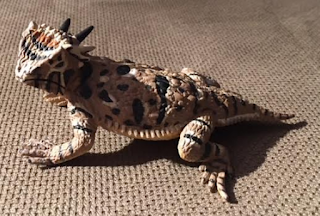The Ugly Duckling swimming alone
This first drawing is also posted with the song lyrics below. Here the "ugly duckling" is swimming alone and happy. I think it shows that until others tell us something is wrong with us, we can be happy. It is when others bully us into believing that we are inferior that we can start to doubt our own value. That does not mean we should not strive to be our very best, but never believe a bully's lies. Read more to see why.
The Ugly Duckling is a story originally by Hans Christian Andersen. He was a Danish author who was a writer of
children’s stories… mainly he is known for his Fairy Tales. He also wrote many plays, novels, travelogues
and poems… but most of us know him for
those fairy tales. One of them is The Ugly Duckling. A movie musical titled with a title of his name was made in 1952. It stars Danny Kaye. One of the songs is The Ugly Duckling.
I drew three pictures to illustrate the song. The last drawing is an older drawing, but I re-posted it on the following buttons found above...along with the 3 new drawings... All Printables, Animals, and Fantasy Myths and Circus. The lists of printable versions of the drawings are found by clicking those buttons at the top of the blog.
The Ugly Duckling
With Illustrations by Robin Lyman
Song from the movie Hans Christian Andersen
NOTE: The Bolded titles below the pictures are not part of the lyrics.
The Ugly Duckling swimming alone
There once was an ugly duckling
With feathers all stubby and brown
The Ugly Duckling getting bullied
And the other birds in so many words said
“Ptt get out of town!
Ptt! Get out!
Ptt! Get out! Ptt!
Get out of town!”
And he went with a quack and a waddle and a quack
And a flurry of eiderdown
That poor little ugly duckling
Went wandering far and near
But at every place they said to his face
“Ptt! Get out! Ptt! Get out!
Ptt! Get out of here!
And he went with a quack and a waddle and a quack
And a very unhappy tear
The Ugly Duckling in the Winter
All through the wintertime he hid himself away
Ashamed to show his face Afraid
of what others might say
All through the winter in is lonely clump of wheat
Til a flock of swans spied him there and very soon agreed
“You’re a very fine swan indeed!”
The Ugly Duckling finds out he is a Swan
“A swan? Me a swan? Ah go on!”
And he said “Yes you’re a swan!
Take a look at yourself in the lake and you’ll see!”
And he looked And he saw And he said
“I AM a swan! Wheeeeeeee!
I’m not such an ugly duckling
No feathers all stubby and brown
For in fact these birds in so many words said
“Tch! The best in town!
Tch The best! Tch!
The best! Tch Tch! The best in town!”
Swan realistic
(This is an older drawing.)
Not a quack not a quack not a waddle and a quack
But a glide and a whistle and a snowy white back
And a head so noble and high
Say whose and ugly duckling?
Not I!
The ugly duckling story is known to happen in real life with
people. I have known young people who
were outcasts in their school days and yet they went on to be very
successful. Some became beauty queens,
or millionaires or huge successes in their field of work from doctor to
politician.…or they just became happy people with a good marriage and a
successful life. If you feel like an
ugly duckling there may just be hope for you.
Your career matters if you strive to support yourself and or your family
and try to excel at what you do…whatever that is.
I myself and my wonderful wife were bullied and teased in school. She was heavy and I was super skinny at the
time. I had a trach tube and I had no athletic skills at all. My future wife struggled to learn to read in elementary school. We were bullied by the "popular" kids. And yet as adults we have had a glorious life
together! WE are not millionaires yet we
are successful teachers who loved our work. . . love our children. . . and love our grandchildren. We have lots of extended family we care about too! We have friends who also mean a lot to us. Some of our family and friends went through the ugly duckling stage in their lives.
My wife was a Geologists before teaching and I was a Respiratory
Therapist before I became a teacher. We
studied together after our marriage and got masters degrees in Geoscience together. We have served together in our church and as
teachers of science. I feel like we are
ugly ducklings that became swans in our lives.
Yes we now have pretty bad health challenges…but yet we are also happy
grandparents! We travel and see new
places all over the world as we can. We truly are happy
people who were once ugly ducklings. In a way, we have been each other's swan. By the way, I
honestly know of some people that bullied and teased me who had a much less
successful life …in my opinion.
So don’t despair if you have found yourself in an ugly duckling phase
of life. Your swan years may just be
ahead of you. So if you get bullied, never believe the bully's lies. Again, your swan years are ahead of you.






























